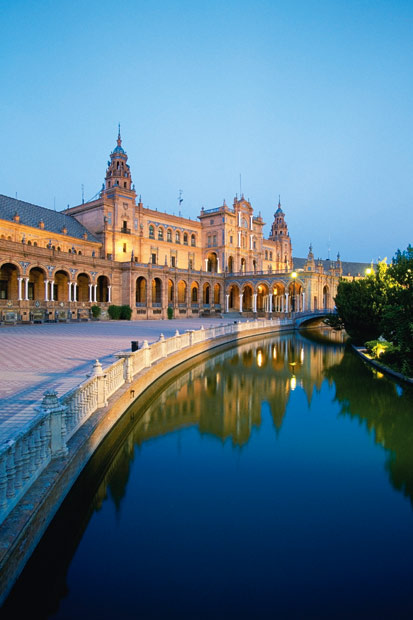On our second night in Seville we got lost. We’d been to a flamenco concert, my first, a little way out from the centre. Eight musicians sat in a horseshoe on a plain stage. Deep plaintive wails of the campo pierced a surface of jangling guitars. Men in the crowd murmured ‘Olé’ to applaud moments of virtuosity.
‘Let’s go for a walk,’ I said as we walked out of the theatre. I was emboldened by the soulful music and wanted to see more of the town. In hindsight I was also emboldened by the Spanish-portioned bucket of ‘gintonic’ I had drunk at English-tourist speed during the interval.
Soon we were walking down a long, straight, very dark road. Earlier we had passed massed teenagers, who sat around their scooters, gulping bottles of pre-club calimocho. But soon they had thinned out and now we searched in vain for landmarks.
‘I think I can see a space rocket,’ said my friend.
‘There’s no need for that. I’ve admitted I took a wrong turn.’
‘No, I mean actually.’
I looked up. She was right. Looming behind a fence, just discernible against the inky night, was a model of the European Space Agency’s ‘Ariane’ rocket. It was built for the world Expo that Seville hosted in 1992, the huge site of which stands empty on the western banks of the Guadalquivir. But then we were glad to see it.
We were there just as the forge-like heat of July and August began to ease to merely ‘hot oven’. Our hotel was the Palacio de Villapanes, a converted stone palace almost gorgeous enough to make you renounce Airbnb.
We expected a romantic city trading on old glories. The past few years have been brutal for Andalusia. Unemployment is around 25 per cent, and nearly double that for young people. There was a noticeable absence of twentysomethings, who have presumably headed to Madrid or London to seek their fortunes.
The grand past is also hard to miss. Seville’s architecture bears all the hauteur of its history. Until 1248 it was under Moorish rule, and later it was the hub for Spanish trade with the New World. Grandest of all is the vast cathedral, completed in 1520 and rendered chaotic by endless additions. A whole country, Antigua, was named after one of the side chapels.
But look closer and there is some youthful vigour here, too. Built above a Roman ruin, the Metropol Parasol, a huge covered market made from wood and designed by Jurgen Mayer, was a controversial project, but there is no denying its futuristic cool. If you are bored with tourist tapas there are some excellent restaurants. At conTenedor and Salvador Rojo we had Spanish cooking that wouldn’t be out of place in east London. They even catered for vegetarians — unheard of in southern Spain.
We eventually found our way around, with a lesson for future holidays: it’s fine to appreciate the obvious attractions, as long as you know where you’re going afterwards.






Comments